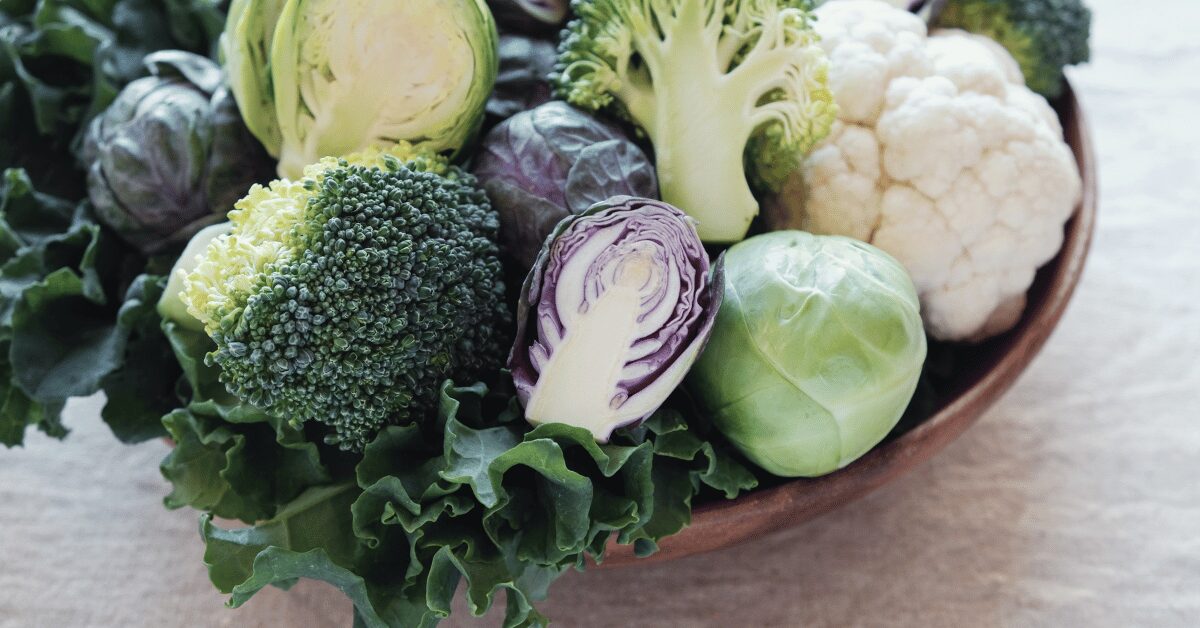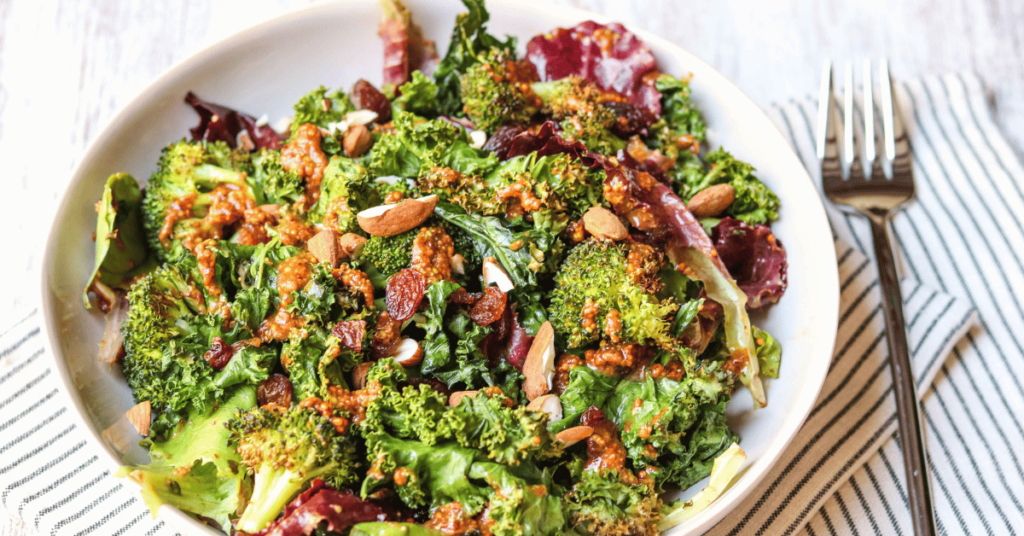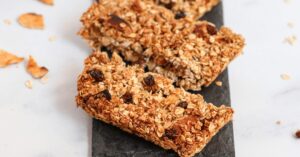
Hormones don’t always speak loudly. Sometimes, they whisper — through irritability, sluggish digestion, tender breasts, or that persistent bloated feeling that doesn’t seem to match what you’ve eaten.
When estrogen isn’t being metabolized and cleared efficiently, these whispers can grow louder, showing up as PMS, water retention, weight changes, or mood swings.
One of the body’s primary ways to move estrogen along is through the liver and digestive system. These organs rely on specific nutrients to transform estrogen into forms that can safely leave the body. And often, that support begins right in your kitchen.
By choosing foods that naturally assist your body’s detox and elimination pathways, you can help keep estrogen metabolism balanced and flowing — starting with the ones below.
1. Cruciferous Vegetables: Liver-Supportive Detoxifiers
Broccoli, cauliflower, kale, Brussels sprouts, cabbage, and arugula are rich in compounds like indole-3-carbinol (I3C)and diindolylmethane (DIM) — natural plant chemicals that help the liver break down estrogen into safer, more easily excreted forms.
They also provide sulfur compounds, which the liver uses in its Phase II detoxification pathways — critical for binding and eliminating excess hormones.
Try this:
- Lightly steam or roast cruciferous vegetables to preserve nutrients.
- Add shredded cabbage or broccoli slaw to salads or wraps.
- Include at least one serving of these veggies daily.
Recipes From Our Kitchen

2. Flaxseeds: Gentle Hormone Balancers
Ground flaxseeds are rich in lignans, plant compounds that can bind to estrogen receptors and help balance overall estrogen activity. They also promote the excretion of excess estrogen through the gut.
Because flax is high in both soluble and insoluble fiber, it supports bowel regularity — another key piece of hormone clearance.
How to use them:
- Add 1–2 tablespoons of freshly ground flaxseeds to smoothies, oatmeal, or coconut yogurt.
- Store flaxseed in the fridge or freezer to protect its healthy fats.
Recipes From Our Kitchen

3. Fiber-Rich Foods: Keeping Estrogen Moving
Estrogen leaves the body primarily through stool. If bowel movements are sluggish, estrogen can be reabsorbed and recirculated, leading to higher levels in the bloodstream.
Foods rich in fiber — like beans, lentils, leafy greens, chia seeds, berries, pears, and oats — help bind estrogen in the gut and keep digestion moving smoothly.
Aim for:
- At least 25–35 grams of fiber daily.
- A colorful plate filled with a variety of plant foods for a broad range of fibers and phytonutrients.
If you struggle to get enough fiber from food alone, supplemental options can be helpful. Look for blends that include partially hydrolyzed guar gum, psyllium husk, acacia fiber, or inulin, which gently support regularity and gut health.
4. Bitter Foods: Encouraging Bile Flow
Bile is the carrier that transports toxins and used hormones out of the liver and into the digestive tract. Bitter foods help stimulate bile flow and support liver function.
Add more of these:
- Dandelion greens
- Arugula
- Endive
- Radicchio
- Lemon water before meals
A simple daily habit: sip warm lemon water in the morning or add a handful of arugula to your meals.
Recipes From Our Kitchen

5. Antioxidant-Rich Foods: Protecting Estrogen Metabolism
The liver’s detox pathways generate free radicals as a byproduct, so antioxidants help buffer this process. Foods rich in vitamins C, E, selenium, and polyphenols protect your cells and support healthy estrogen metabolism.
Focus on:
- Berries (blueberries, raspberries, blackberries)
- Citrus fruits
- Green tea
- Turmeric
- Dark leafy greens
- Brazil nuts (for selenium)
Recipes From Our Kitchen

6. Healthy Fats: Hormone-Friendly Building Blocks
While we often focus on clearing estrogen, balanced hormone production also requires the right types of fats. Omega-3 fatty acids found in wild-caught salmon, sardines, walnuts, and chia seeds help reduce inflammation and support cell membrane health, which influences how hormones communicate with cells.
Add healthy fats through:
- A drizzle of olive oil on roasted veggies
- A handful of walnuts or pumpkin seeds as snacks
- Fatty fish 2–3 times per week
Recipes From Our Kitchen

Bringing It All Together
None of these foods are magic on their own. But together, they give your body the raw materials to restore something many people haven’t felt in a long time — internal ease.
When your liver and gut are supported, estrogen moves through your body as it should. Your digestion feels smoother, moods more even, and energy more steady.
You don’t need to overhaul everything overnight — start with small daily habits:
- A smoothie with flax and greens in the morning
- Roasted Brussels sprouts at dinner
- A few handfuls of colorful vegetables each day
Over time, those quiet, consistent choices build a foundation where your hormones can whisper harmony again.
Ready to See Where Your Hormones Stand?
If you’re wondering how your own hormone rhythms are functioning — and whether stress, sleep loss, or lifestyle shifts might be throwing things off — here’s an easy next step.
👉 Take the “How Balanced Are Your Hormones?” Quiz here »
You’ll receive a free, personalized 13-page hormone report that explores eight key hormone systems through a functional medicine lens, including:
✅ A snapshot of your current hormone balance
✅ Insights into your energy, mood, sleep, metabolism, and reproductive health
✅ Functional medicine–based guidance to help you begin rebalancing naturally
Think of it as your roadmap back to alignment — helping you understand your body’s signals, restore hormonal harmony, and feel more clear, steady, and strong from the inside out.

How Balanced are Your Hormones?
Take our 3-minute quiz to discover your unique hormone balance—and get a personalized 13-page report with insights and actionable steps to support energy, mood, sleep, metabolism, and reproductive health.






